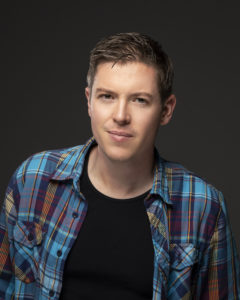
This month’s Industry Insider Interview is with Kelsey Skea, the Editorial Director of Two Lions and Amazon Crossing Kids at Amazon Publishing. Prior to taking on this position, she worked as an editor at Disney Book Group—a real plus in my book, considering that I live in Florida which means I’m barely a stone’s throw from Orlando!
(Okay, Sarasota’s a brisk two-hour drive, but when it comes to The Mouse, who’s going to quibble about a little distance?)
And here’s another reason I had to invite Kelsey to be part of the OPB friends and family club—I’m a fan of Two Lions books, as you can see!
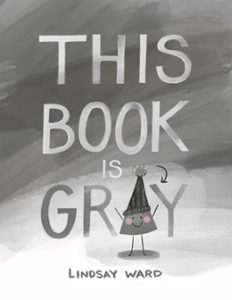 Witness Picture Book Reviews for Anna Kang’s We Are (Not) Friends (Two Lions) and Joy Jordan-Lake’s A Crazy-Much Love (Two Lions)!
Witness Picture Book Reviews for Anna Kang’s We Are (Not) Friends (Two Lions) and Joy Jordan-Lake’s A Crazy-Much Love (Two Lions)!
Behold Educational Activities for Lindsay Gray’s This Book is Gray (Two Lions)! and Todd Tarpley’s Naughty Ninja Takes a Bath (Two Lions)!
So, let’s see if Kelsey can help us figure out what makes Two Lions Books so appealing!
RVC: Looking back at when you first got hooked on books, where did you think it was going to lead you?
KS: I’ve always loved books. I remember going to the library from a very young age and the very proud moment I got my own library card. I also loved writing stories and was encouraged to write by my family. As a young girl, being a writer was one of the many possibilities I imagined for myself. I feel so fortunate to have ended up in children’s publishing.
RVC: What key training/experiences prepared you for your editing career?
KS: I had a couple of internships and summer jobs that involved publicity, copywriting, and writing articles. Those, alongside my English literature classes at the University of Virginia, gave me insight into writing for different purposes and reacting to fiction (albeit of a different kind).
The best training was on the job. As an editorial assistant and assistant editor at HarperCollins Children’s Books, I tried to learn everything I could from the senior staff I supported. I was fortunate that they were all generous with their time and expertise—that’s something I always remember as a manager.
RVC: What’s the best advice you’d give to a current college undergraduate who’s interested in an editing career?
KS: If possible, try to get some sort of work experience that relates to the field, even if tangentially. I came to my interviews for editorial positions with writing from a publicity internship, ad copy I’d written for my local radio station, articles I’d written for a local business journal, and some essays from literature classes. In a way, these all related to aspects of the industry, even if not directly. They showed I had the potential to write good jacket copy and critically analyze fiction.
During my interview, my first (future) boss asked me if I liked to organize. Reflexively, I said, “No.” Happily she started laughing, and then I jumped into how I was good at it even though I didn’t like it.
Pro tip: maybe be more enthusiastic about your organizational prowess than I was! Also, use your college’s alumni network to see if you can connect with someone in the field to learn more about it or possibly connect with a job opportunity.
RVC: Great advice indeed!
So, you joined Amazon in 2013, right after they acquired 450+ titles from Marshall Cavendish Children’s Books. How challenging is it to incorporate another press’ entire catalog like that and still keep up with your own publishing agenda?
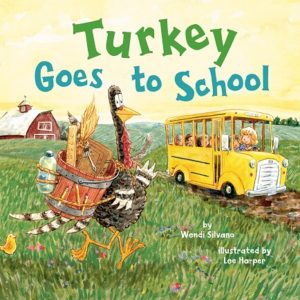 KS: It was an exciting time to join the company. The Marshall Cavendish Children’s Books list had so many strong titles, and some of those titles absolutely took off at Amazon Publishing. For example, Turkey Trouble by Wendi Silvano and Lee Harper, has had such growth that we’re publishing a fifth book in the series this summer, Turkey Goes to School, with a sixth book signed up for next year.
KS: It was an exciting time to join the company. The Marshall Cavendish Children’s Books list had so many strong titles, and some of those titles absolutely took off at Amazon Publishing. For example, Turkey Trouble by Wendi Silvano and Lee Harper, has had such growth that we’re publishing a fifth book in the series this summer, Turkey Goes to School, with a sixth book signed up for next year.
That’s one of the things I love best about Amazon Publishing—our books are supported in many different ways over their lifetime and constantly exposed to new readers.
RVC: How did those original Marshall Cavendish books differ (or not!) from Two Lions books? And what makes a Two Lions book a Two Lions book, in your opinion?
KS: Well, the Marshall Cavendish Children’s Books all became Two Lions books (or Skyscape, in the case of the YA titles), but as every publisher’s focus evolves over time, so has ours. Many of those titles were acquired with an eye to the institutional market, and while that is important to us, we’re also looking for books that have an emotional core that kids can connect with, as with Anna Kang and Christopher Weyant’s You Are (Not) Small series, which uses bearlike creatures to examine broad subjects like perspective, fear, perception of perfection on a level that’s very kidlike and full of humor and heart. Another great example is A Home Again by Colleen Kosinski and Valeria Docampo, out this fall, which is from the perspective of a house who closes itself off after its first family moves away, only to rediscover that it can be a home once again.
RVC: Let’s get specific about your job. What’s something about the editing process that might surprise people?
KS: People outside of the industry often think that my work focuses on grammar-related issues. Thankfully, our terrific copyeditors make me look good in that respect. People are often surprised at how much of my day involves business decisions about our overall list or assessing and participating in new opportunities. Often they’re surprised to hear about the developmental process and how I work with closely with our art director from sketches through to the final artwork.
RVC: People talk all the time about the importance of community for writers and artists. What about community in terms of editors?
KS: I’ve been fortunate to work with some amazing editors over the course of my career, and lucky to work with some amazing women, in particular, who really lift each other up. But beyond editors, I also work closely with folks from marketing, production, publicity, sales, and various other departments. What I love about the kidlit community is that those connections last, even if you fall out of touch with someone and run into them at a conference (and I’m imagining a post-pandemic world where that will happen once again).
The publishing community wants the best for each other and that’s a nice thing to be part of professionally.
RVC: Complete the following sentence. Kelsey Skea is an editor who…
KS: …puts her heart—and her pencil—into working with authors and illustrators to make their book the best it can be.
RVC: What are a few of your proudest moments as an editor?
KS: It’s always a thrill to see a book you’ve worked on win an award or receive a great review, but the proudest moments for me are seeing a child’s excitement about a book or character, either in person or in a letter from their caregiver.
RVC: How do you balance the creative side of editing with the business side?
KS: As a publisher, I want to do everything possible to support the success of the books I acquire, so I spend a significant amount of time on the business side looking at the best opportunities for a particular title, whether that’s in terms of publicity, marketing, or placement in some of our programs, in addition to how it fits into the overall list. I work with these teams consistently to experiment and get creative with different ways to give our books exposure.
I spend a lot of time in creative development so the book is the strongest it can be. When possible, I try to group meetings to open up blocks of time when I can focus on a book-in-progress. I block out longer chunks of time for significant editing and sign out of email so that I can delve into the work uninterrupted.
RVC: Speaking of the business side of things…it SEEMS like you’re trying to buck the trend of books taking so long to come out. I especially note this with a series—like Dexter T. Rexter or Duck and Hippo—where titles come out without a year or two between them.
KS: We try lots of different approaches at Amazon Publishing in how we publish, including cadence. I always think about how long a child will be passionate about a picture book character before they leap to the next reading level or format. And so much in the way that people consume content now with binge-viewing, I’ve tried to launch follow-up picture books quickly so that if a child loves a character, they can read the next book as soon as we can get it to them.
RVC: What are some forthcoming projects you’re excited about?
 KS: So many projects! It’s always a special treat to work with debut talent, and I have two titles this year that fall into that bucket: Julius and Macy: A Very Brave Night, a gentle tale of friendship and bravery from author-illustrator Annelouise Mahoney that is enchantingly illustrated and comes out on April 1st, and Dancing with Daddy, a debut from Anitra Rowe Schulte and established illustrator Ziyue Chen, that tells the story of a girl who uses a wheelchair and communicates through gesture and a book illustrated with pictures that show her dreams of her first father-daughter dance. I love that it’s a story many young girls can relate to, but coming from an underrepresented point of view.
KS: So many projects! It’s always a special treat to work with debut talent, and I have two titles this year that fall into that bucket: Julius and Macy: A Very Brave Night, a gentle tale of friendship and bravery from author-illustrator Annelouise Mahoney that is enchantingly illustrated and comes out on April 1st, and Dancing with Daddy, a debut from Anitra Rowe Schulte and established illustrator Ziyue Chen, that tells the story of a girl who uses a wheelchair and communicates through gesture and a book illustrated with pictures that show her dreams of her first father-daughter dance. I love that it’s a story many young girls can relate to, but coming from an underrepresented point of view.
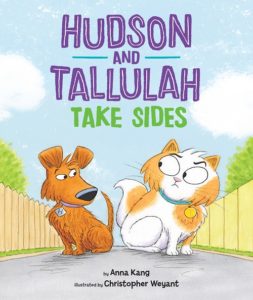 Also this year, we have a couple of titles that address the importance of community and finding common ground: Hudson and Tallulah Take Sides from Geisel winners Anna Kang and Christopher Weyant, out this May, which features a cat and dog who can’t agree on anything, and Between the Lines from Lindsay Ward, out this fall, about a neighborhood that drifts apart and literally loses its color until a boy takes matters into his own hands.
Also this year, we have a couple of titles that address the importance of community and finding common ground: Hudson and Tallulah Take Sides from Geisel winners Anna Kang and Christopher Weyant, out this May, which features a cat and dog who can’t agree on anything, and Between the Lines from Lindsay Ward, out this fall, about a neighborhood that drifts apart and literally loses its color until a boy takes matters into his own hands.
RVC: I look forward to seeing those books!
But let’s toss a submission-related bone (or two!) to writers. What are you just not interested in seeing right now?
KS: We’re pretty well covered on turkeys, dinosaurs, monsters, and fractured fairy tales. And no counting books, please!
RVC: And what’s the flip side of that? What kind of submissions would you love to see?
KS: For Two Lions, we’re looking for books from a diverse group of authors and illustrators that have an emotional arc, either driven by a memorable personality or featuring standout writing and illustration. We’re also always looking for seasonal titles.
RVC: One last question for this part of the interview. In all your experience as a picture book editor, what has most surprised you?
KS: I think what surprises me the most—in a good way—is the sheer reach and impact a picture book can have each time I experience it. I love seeing a child in the UK dressed up as a character from a book I edited, or seeing a child’s reaction to a book knowing it is helping them cope through a difficult time. It’s easy to get a little caught up in my own world, so these moments are always a refreshing surprise that centers me and reminds me why my job is so important.
RVC: Thanks for that! But now it’s time for the SPEED ROUND, Kelsey. That means zippy questions and zoomy answers, please. Are you ready?
KS: So ready!
RVC: Favorite lunchtime pick-up spot in Midtown?
KS: When I need to grab a quick lunch, I like the chicken shish at Naya. I’m looking forward to getting some once we’re back at the office. There’s always a line out the door, but it moves quickly.
RVC: You’re caught singing in the shower. What song is it?
KS: Assuming I’m not groggy, maybe a little Zac Brown.
RVC: Biggest time waster?
KS: Twitter. And pulling information into spreadsheets!
RVC: Five things you can’t do your job without?
KS: Creative thinkers. Outstanding authors and illustrators. A team who is passionate about kidlit. Literary agents. A sense of humor.
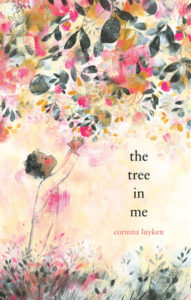 RVC: What are some recent non-Amazon picture books that really caught your attention?
RVC: What are some recent non-Amazon picture books that really caught your attention?
KS: Well, of course all of the Caldecott honorees—such a terrific group this year. Watercress by Andrea Wang and Jason Chin—can’t wait to flip through that. Oona by Kelly DiPucchio and Raissa Figueroa (Raissa is working on a book with us in 2022, We Are One), and The Tree in Me by Corinna Luyken.
I could go on and on, but I’ll stop there.
RVC: Let’s end with a single fave line from a picture book you edited.
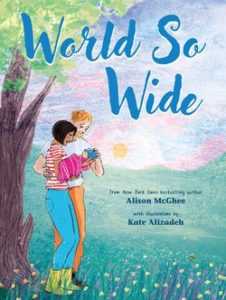 KS: “You’ll show them a world that’s bright and true, so ever after, when they think of you, the world will feel full of love … and soft and sweet and new.” This is from World So Wide by Alison McGhee and Kate Alizadeh, and the pairing of Kate’s gorgeous art and Alison’s lovely text gets me every time.
KS: “You’ll show them a world that’s bright and true, so ever after, when they think of you, the world will feel full of love … and soft and sweet and new.” This is from World So Wide by Alison McGhee and Kate Alizadeh, and the pairing of Kate’s gorgeous art and Alison’s lovely text gets me every time.
RVC: What a terrific way to end! Thanks so much, Kelsey. It’s always a treat to partner with my friends at Amazon (like we did with Marilyn Brigham a few years back!).


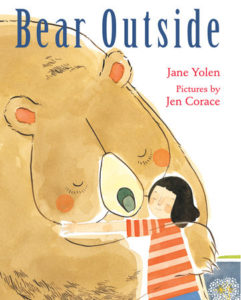







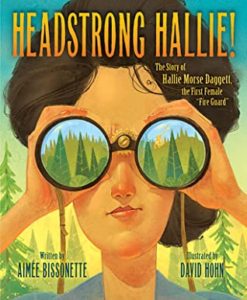
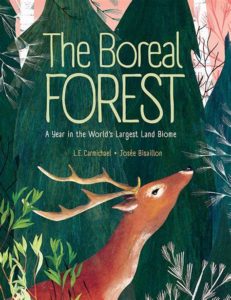
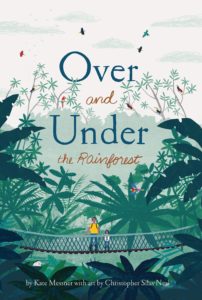
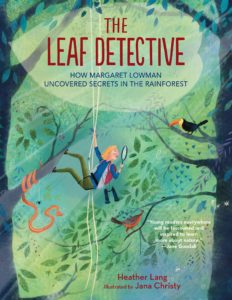
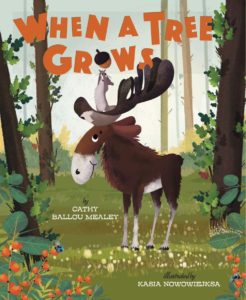
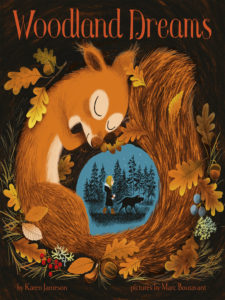
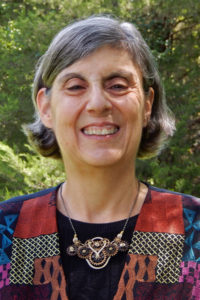 This month’s author interview is with award-winning children’s book author, Laurie Wallmark, who writes wonderful picture books and regularly presents at conferences. She also offers webinars on kidlit writing, too, like the one I attended last week from her at
This month’s author interview is with award-winning children’s book author, Laurie Wallmark, who writes wonderful picture books and regularly presents at conferences. She also offers webinars on kidlit writing, too, like the one I attended last week from her at 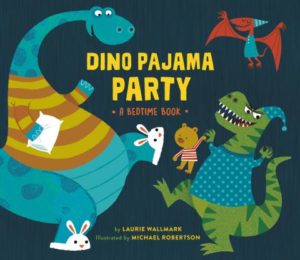
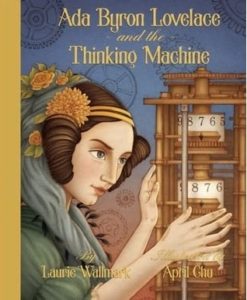
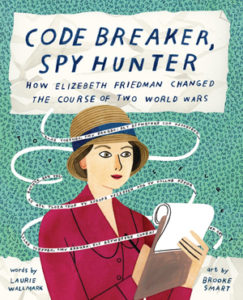
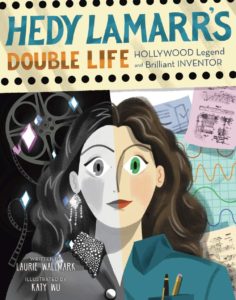
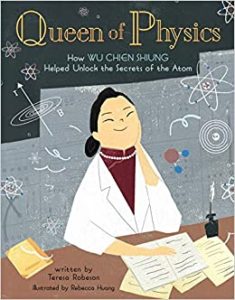
 Octavia Saenz is an editor and cartoonist based in Brooklyn,
Octavia Saenz is an editor and cartoonist based in Brooklyn, 